Part 5—
Origin of Wine and Irrigation
There are two myths in this part. The first is really an adjunct to the stories on farming and family life. It gives an origin of the cactus wine ceremony, a topic that was treated at the end of the Thin Leather Corn and Tobacco text, above.
The cactus wine ritual is for the purpose of bringing rain. This is best seen in the chanted or orated speeches that are given during the event. Actually the speeches included in the Thin Leather Corn and Tobacco text, although attributed to Corn, are like the ones used at wine ceremonies, or "wine drinks" (nawait i 'ita ), as these events are called in Pima-Papago.[1] Taken together, all these texts, including Thin Leather's Corn speeches, normally dwell first on the obtaining of wind, cloud, rains, and seeds from the inhabitants of distant "great-houses," that is, great-houses at the edges or corners of the universe. Then the typical speech turns to rain and the seeding of the local fields. The seeds grow and prosperity comes. Wine feast speeches sometimes also mention drinking and the subsequent vomiting of cactus wine and the rumbling of people's stomachs and bowels. Thus, the humans act in sympathy with the clouds that they hope to attract.
In their prose narrative and comments, Smith and Allison do not mention the rain-bringing aspect of the wine ceremony. The songs in Smith's story allude to this, but the prose ignores the songs' hints. To Smith and Allison, the ceremony is a misuse of saguaros and an excuse for drunkenness. Siuuhu, they say, did not intend saguaro to be used this way.
The version of the origin of saguaro wine given at the end of part 3, from Thin Leather, does not mention Siuuhu or his equivalent I'itoi. Thin Leather places the origin in the Hohokam era, and if one supposes that Siuuhu was a factor
throughout that time, then Siuuhu might have observed this development with dismay. But, in fact, godly dismay over human wickedness is a theme only for Smith and Allison. The other mythologies see Siuuhu as equal to the Hohokam in moral frailty, as we will discover in comparing the accounts of Siuuhu's murder.
The second story, "Origin of Irrigation," is a clear-cut man-over-nature myth. Irrigation obviates rain and therefore would obviate the wine feasts of which Smith and Allison disapprove.[2] The myth begins with a most obscure passage stating that Siuuhu expected a loss of both seawater and rains. The people notice a decrease in the rain, and they start a canal from a point actually a bit to the north of historic Pima territory but a point at which one of the longest of the actual Hohokam canal systems had its tap, into the Salt River. This system carried water as far as twenty miles. Interestingly, this Hohokam system begins at approximately the same place where the water from an immense American-built damming project enters the Phoenix metropolitan area, a place called the Granite Reef Dam. Smith mentions this, implying that the Hohokam preceded the U.S. Corps of Engineers in selecting the ideal spot to bring water into Phoenix.
The text of the myth would gladden an engineer's heart. A series of medicine men try to make water flow through the already dug channel. The first, weak, medicine men fail; the last, most magically potent one, succeeds.
Appended to this part are both the Fewkes and Lloyd versions of Thin Leather's story of the origin of canals. I include both because they are short and difficult of access at present and because the topic of canal building is of some interest. The texts are reassuringly similar, a testimony to Thin Leather, his Pima interpreters, and Fewkes and Lloyd. These versions are generally similar to Smith and Allison. Their differences are four. First, neither version of Thin Leather mentions a canal-building location near Granite Reef Dam, even though Thin Leather refers to a place in that region in other stories ("Feather Braided Chief and the Gambler" and one of his conquest episodes). Second, each Thin Leather version mentions a pair of communities where canal projects are undertaken, one where the canal is successful, and another where difficulties similar to those
in Smith-Allison are encountered. Third, no distinction is made in these versions between the point where the fields would be watered (no doubt, close to each canal-sponsoring community) and the point where a river would be tapped. In fact, this third matter makes a difference when comparing Thin Leather to Smith-Allison. The first of the Thin Leather communities almost certainly corresponds to today's Pueblo Grande Ruin, in Phoenix, Arizona. It is also certain that this place was watered by a canal that taps into the Salt River only five miles from the site and twenty miles downstream from Granite Reef Dam (Map 2). Thus, the canal system that feeds Pueblo Grande would not be the one referred to by Smith-Allison. The second community is more vaguely located: "near Mesa [Arizona]," says Fewkes's Thin Leather; "on the south side of the Salt River" [which is true of Mesa], says Lloyd's. Any Hohokam community near Mesa would have been served by the canal system originating near Granite Reef Dam, and so this part of Thin Leather's myth is consistent with Smith-Allison. Fourth, both Thin Leather versions differ from Smith-Allison in holding that the final, powerful medicine person is actually a medicine woman, who has to be summoned from far to the west (the oceanside, according to Fewkes); furthermore, the insufficiently powerful medicine men are not ordinary Hohokam according to Thin Leather. Rather, it is Siuuhu who cannot make the canal water flow.
Story 7—
Origin of Cactus Wine
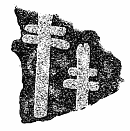
After this sin was committed, Siuuhu thought he would make some kind of food for the people that would be delicious and healthy. He picked up a man, gave him some of his power, and ordered him to do
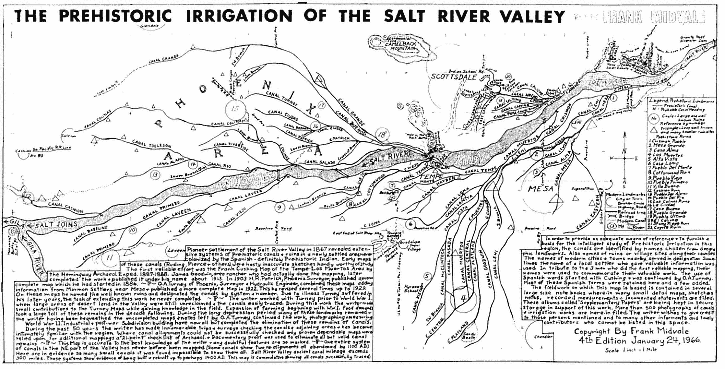
Map 2.
Hohokam canals in the Salt River Valley. Granite Reef Dam is in the extreme northeast corner.
(Drawn by Frank Midvale, a Phoenix archaeologist)
this thing for him. When the man received the power, he felt proud. He got his brother-in-law and went to the west. When they started to go, they sang:
I went out
And I'm sadly going
Toward the west.
I'm looking at saguaro blossoms
And I'm sadly handling the cactus.
He went a little distance, turned back, and started toward the east. In the east, he sang:
I am going toward the east.
I am sadly looking at young cactuses,
With ripe fruit on it.
I am sadly handling them.
He went just a little ways east. He was making the cactuses, and if anyone goes that way they will see that the cactuses don't extend very far from here to the east.
When the man saw that the cactuses were good, he thought that Siuuhu was very wise. Then he took care of himself for four times four days.
When the cactus fruit was ripe, the man didn't think very right about how he would use the fruit. He made plans to make a wine that would make people drunk. So when the fruit was ripe, they
gathered it, made wine, and kept it for four days to ferment.
When it was ready, they called four powerful medicine men to drink the wine. They called the people together and took one of the medicine men and sat him on the north side, another on the west side, another on the south, and another on the east. When the sun was just coming up, two men put some wine in vessels and took it and gave it to the man who was sitting at the east. They gave him four full vessels to drink. When he drank the wine, he felt pretty proud, as though he was the wisest medicine man of any of them. He sang(the "drunkard's song"):
Some blooming, blooming wind (like pretty perfumed
flowers)
I'm sending my wind (power)
I'm making the earth turn yellow.
Of the two that were distributing the wine, one next went to the north and the other went to the south. The next man to get the wine was the one that was sitting at the north. When this man drank and got drunk, he sang:
They have come to their blooming,
Wine,
I drink it and am drunk (noda)[a]
[a] 'Dizzy', 'crazy', or 'drunk', but there is another word, navam that only means drunk.
So I am sending out clouds
And everything it's turning green.
The other one who carried the wine, who turned to the south, gave the wine to the one who was sitting on the south side. He drank it and sang:
They gave me that red water to drink,
And when I drink it
I am drunk,,
And I am making
Some rainbows.
Both of the two men who were distributing the wine came to the man sitting on the west side. They gave him the wine, he drank it, and sang:
You have given me
Some crazy water (nodigum schrodek)[b
] And you have made me drunk.
This ground is getting damp (he makes rain).
All the people got drunk and were running all around, and it happened that one old man was dead drunk, was lying down someplace, and they stepped on his head and smashed it.
The people that did this thing of drinking were three different kinds, or were related to each other in three different ways:
[b] Nodaggam su:dagi[*] , 'dizzy [crazy, drunk] water'.
1. A-pa-pa-gum,[c] a certain way of calling father, like in English "Daddy," "Papa," etc.,[d]
2. Va-va-gum,[e]
3. O-galt.[3]
These three groups of people were there at the first drinking.
When Siuuhu saw this drinking, he didn't like it. The people did not use the fruit as he had planned for them, as food. So he changed it so it would be ripe only at one season of the year, and he commanded that the cactus would take a long time to grow before it would start giving fruit.
Story 8—
Origin of Irrigation
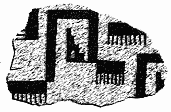
From then on, old man Siuuhu turned himself into a small child and sat someplace by the seaside. He made a hole there, and he said he was going to bring all the water from the sea and put it in the hole.
[c] Apapgam , the "fathers" in a certain clan or sib.
[d] where in English one says, addressing one's father, "father," "daddy,"
"pop," etc., in Pima the children of a given clan or sib address their fathers by a "daddy" term specific to that clan; e.g., those of the clan called apapgam address their fathers as "ñ-apap " ('my-apap').
[e] Vavgam , the fathers of the vav clan or sib.
He also told that the rains would not come all over the earth very often, only once in a while. And the crops that people raised would be irrigated evermore by rainwater.
The people saw that the rain wasn't coming down often as it used to, so they gathered to plan how they would make canals in order to irrigate their crops. They finally decided they would make a canal right below "Suik" (Red, the little mountain north of Granite Reef Dam).[f] They dug with pointed sticks and used their hands to throw out the dirt.
Being of one mind, they thought they would complete this work, but when they completed it and tried to make water run in it, the water wouldn't run. Seeing this, they got one of the medicine men and asked him to draw water in the canal. He went down and walked there, singing:
There lie the ditches
And among them
I am walking.
And among them I am breathing,
Leading the water.
The water acted like it was going but didn't go. This medicine man couldn't do it. So they got another
[f] S-weg, 'Red', the name of a mountain at that place, which is north of the point where today's highway from Scottsdale to Payson begins to descend to the Verde River.
medicine man, and he went down and stood in the canal and sang:
There lie the ditches
And I stood in the midst,
I'm making the winds blow (dust devils)
I'm making the water go.
The water acted like it was going, but it stopped and turned back to where it started from. This man couldn't do it. So they got another medicine man and told him to try. He sang:
By the side of a river
There lies a canal.
In that canal
The water is making signs of pretty decoration.
This man made the water go, but not enough. They got another medicine man and told him to put some more water in the canal. He went down and stood in the canal and sang:
There lie the canals
And in the midst of those
I stand
Making water-hair snakes.
The water flowed some more, and they had plenty of water in the canal. From there on, the people learned how to build canals in order to irrigate their farms.
Supplement
Origin of Irrigation (Thin Leather)
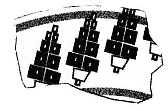
White Feather and his people lived at a settlement called Sturavik Sivanavaaki[g] near Tempe,[5] the site of which is now a large mound. According to some legends, this chief was the first man who taught the Pimas irrigation, and he showed them also how to plant corn. Through his guidance his people became prosperous, and all the Pima congregated at his settlement to trade.
The people of a settlement near Mesa could not build a canal because the ground in the vicinity was too hard, so they asked Tcuhu [S-e'ehe, Siuuhu] to aid them. He sang magic songs for four days, and at the fourth song the ground softened and the people easily excavated the ditch, but the water would not run in it. Tcuhu found he was powerless to make it do so and advised them to invite Towa Quaatam Ochse,[6] an old woman who lived in the west by the great water, to aid them. She was summoned and sent word to the Mesa people to assemble in their council-house and await her coming. They gathered and awaited her coming, but she did not appear. At night a man passing that way saw her standing at the highest point of the canal blowing "medicine"
[g] S-tua Vi:g Siwañ Wa'aki, 'White Down-feather Chief Great-house'.
along the ditch. Later there came a great wind that dug out a wide channel, and water ran in the canal. The Casa Grande people, it is said, learned the art of irrigating from those living on the site of Tempe, who were taught by Tcuhu. (Fewkes 1912: 51)
Supplement
Tawquahdah-Mawks[en7] and her Canal (Thin Leather) Supplement
Tawquahdah-Mawks[7] and her Canal (Thin Leather)
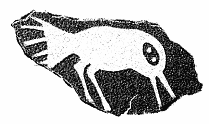
And after this [killing of the Witch, the next story in Smith-Allison's sequence] the people had long peace, increased in numbers, and were scattered all around. Some lived where the old vahahkkees [great-houses] now are in the Gila [River] country, and some in the Papago country [desert south of the Gila], and some in the Salt River country [north of the Gila until the two rivers join slightly west of today's Phoenix]. And those who lived where the mound now is between Phoenix and Tempe [probably at Pueblo Grande Ruin] were the first to use a canal to irrigate their land. They raised all kinds of vegetables and had fine crops. And the people of the Gila country and the people of the Salt River country at first did not raise many vegetables, because they did not irrigate, and they used to visit the people who did irrigate and eat with them; but after a while the people who lived on
the south side of the Salt River also made a canal, and you can see it to this day.
But when those people tried their canal it did not work. When they dammed the river the water did not run, because the canal was uphill. And they could not make it deeper, because it was all in lime rock. They sent for Ee-ee-toy [Drink-it-all-up, alternative name for Siuuhu] to help them. And Ee-ee-toy had them get stakes of ironwood and sharpen them and all stand in a row with their stakes in their hands at the bottom of the canal. Then Ee-ee-toy sang a song, and at the end of the song the people were all to strike their stakes into the bottom of the canal to make it deeper. But it would not work, it was too hard, and Ee-ee-toy gave it up.
Ee-ee-toy said, "I can do no more, but there is an old woman named Taw-quah-dahm-awks (which means Wampum Eater), and she, though only a woman, is very wise and likely to help you better than I. I advise you to send for her."
The people sent for her and she said, "I will come at once." She came as she had promised, but she didn't go where the people were assembled but went right to the canal. And she had brought a fog with her, and she left the fog at the river, near the mouth of the canal. She went up the course of the canal looking this way and that to see how much uphill it ran.
When she reached where the canal ran uphill, she blew through it the breath which is called seev-hur-whirl ,[h] which means a bitter wind. This wind tore up the bed of the canal, as deep as was necessary, throwing dirt and rocks out on each side. Then the fog dammed up the river, and the water ran through the canal.
The old woman did not go near the people but went home, and in the morning when one of the people went to see why the old woman did not come, he saw the canal full of water and he yelled for everybody to come and see it. In this way the people got water for their crops and were prosperous as the others below [downstream from][8] them.
[h] Siw Hewel , 'Bitter Wind'. This wind is an important character in a version of the Feather Braided Chief and the Gambler myth, discussed later.